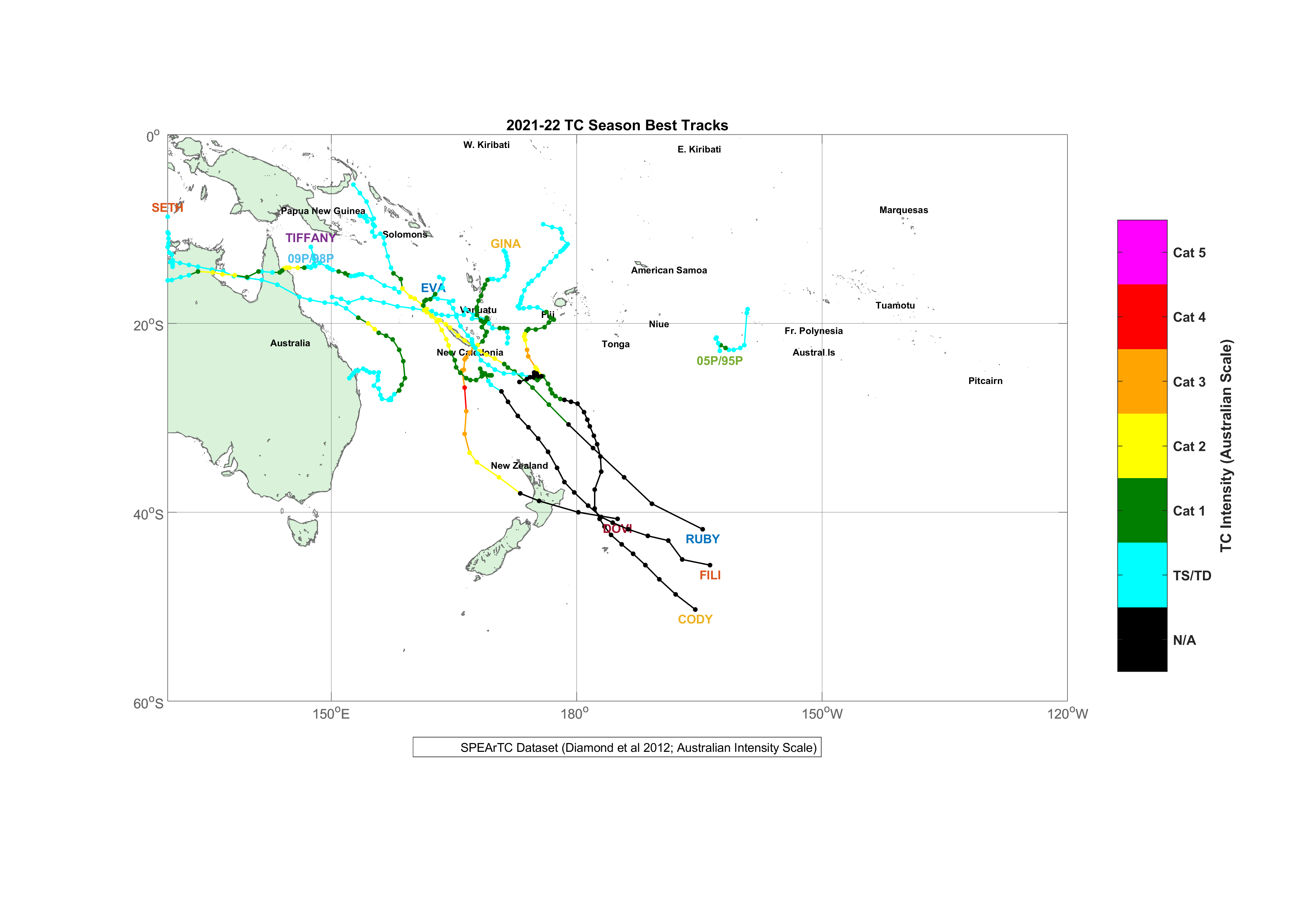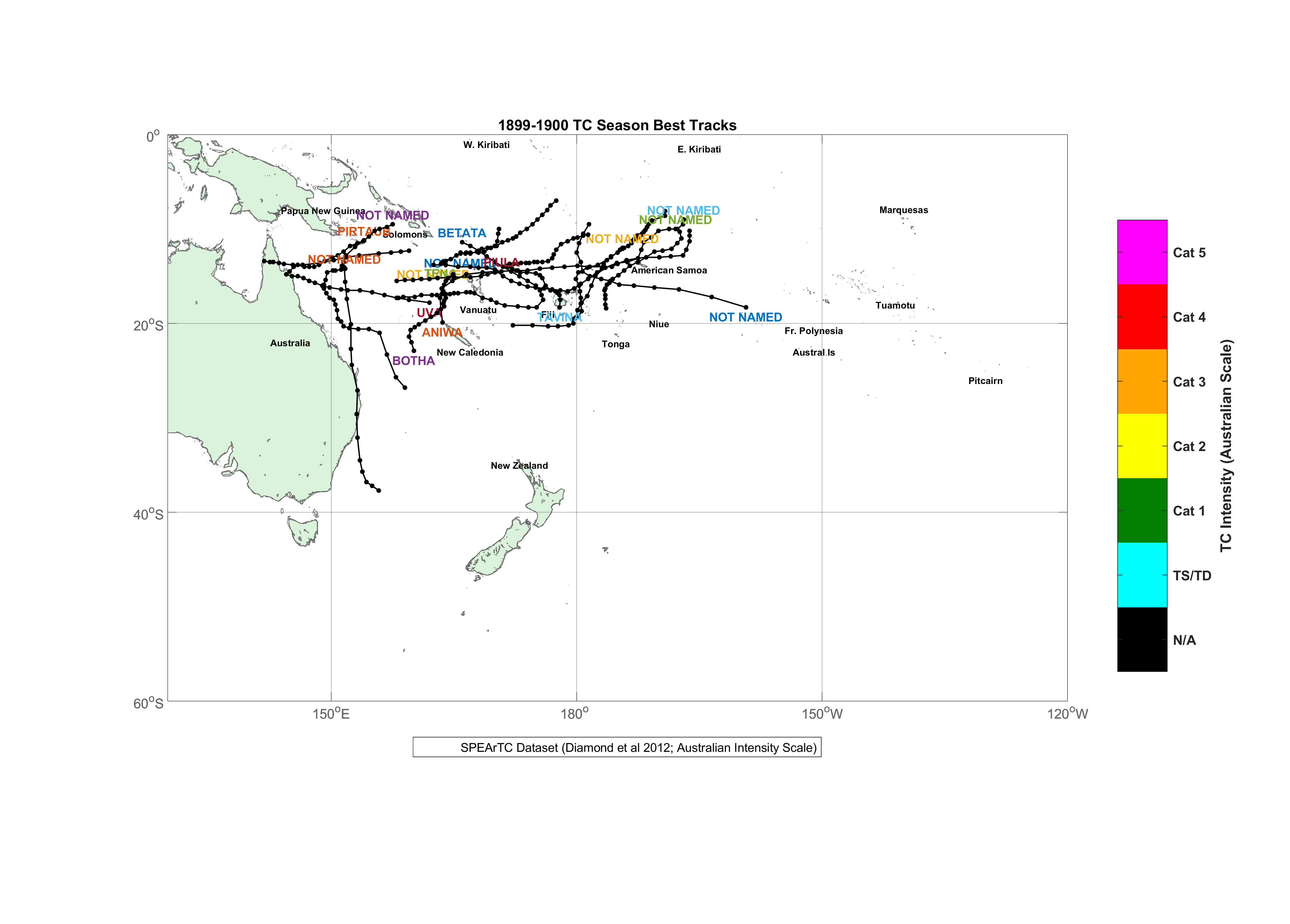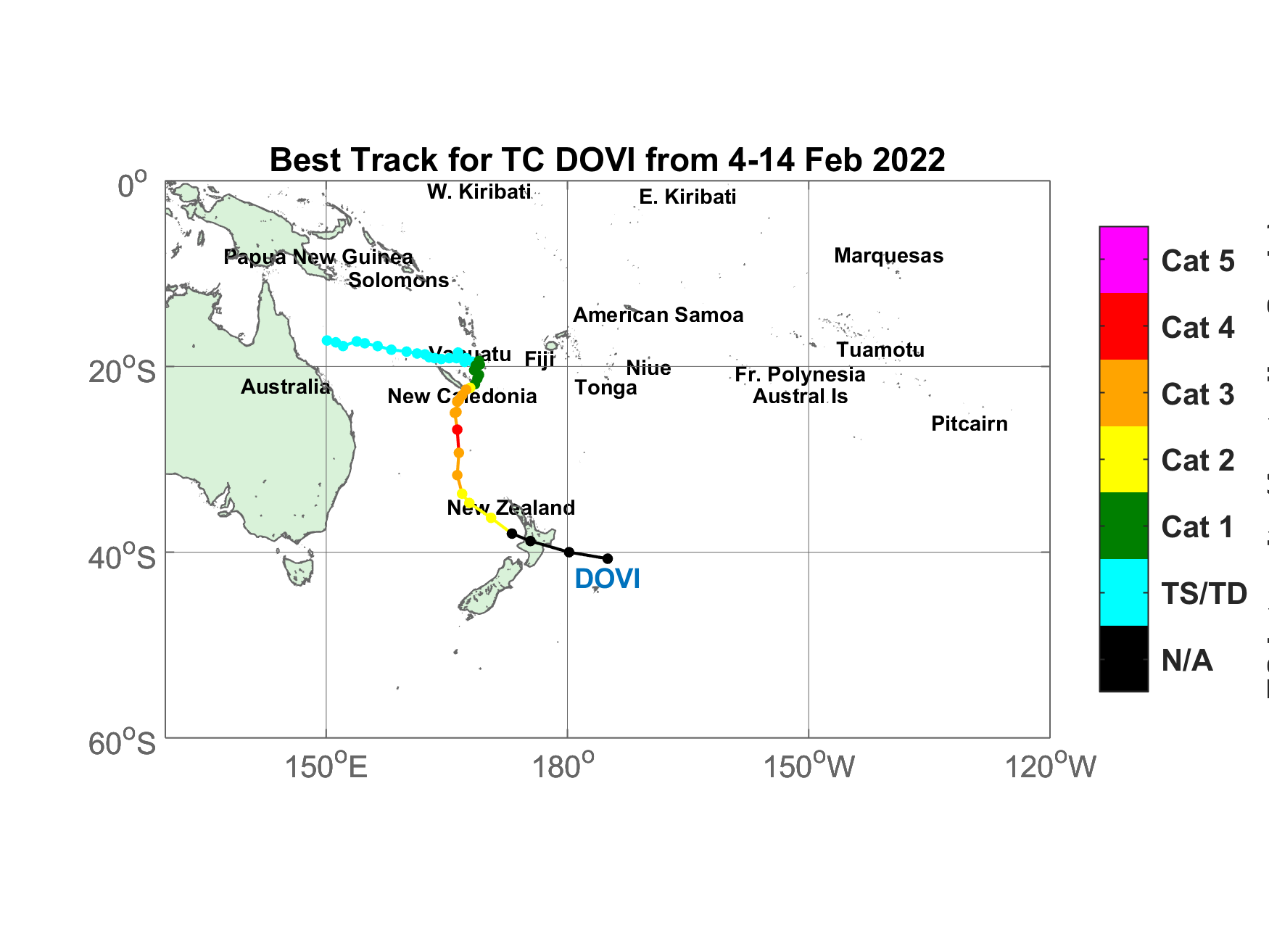ARL Weekly News – December 2, 2022
| Upcoming Events |
AGU Fall Meeting in Chicago
The 2022 AGU Fall Meeting kicks off in Chicago next week, although a number of presentations are available virtually. ARL posters and presentations are summarized on our webpage; the meeting is held December 12-16, 2022.
| Recent Events |
Tropical Cyclone Best Tracks
As part of his climate research work, Dr. Howard Diamond had created a database of tropical cyclone best tracks for the southwest Pacific (from 135° East to 120° West and south of the equator) back in 2011 as part of his PhD studies (see Diamond et al 2012). The database is called the Southwest Pacific Enhanced Archive of Tropical Cyclones (SPEArTC) and is publicly available (via free registration) at http://apdrc.soest.hawaii.edu/projects/speartc/register.php. Since then he has continued to update that database on an annual basis and just recently completed this year’s update on November 30th. This year’s database includes 8 new tropical cyclone strength storms (per the Australian TC Intensity scale) and 2 tropical storm strength storms, plus the incorporation of 16 historic tracks from the 1899/1900 season. A plot of the tracks from the 2021/22 and 1899/1900 seasons are below and information on the update was sent to the nearly 390 registered users of the database (40 more than last year); the users are mostly in the southwest Pacific region, but there are many global users of the database. One NOAA application is that this database is used by the NWS Forecast Office in Pago Pago, American Samoa, to help in producing an annual Tropical Cyclone outlook for the TC season in American Samoa that runs from November 1st to April 30th. During the 2021/22 season, there was only one storm, Tropical Cyclone Dovi that reached at least an Australian Intensity Category 4 status, but only for one 6-hour observations. There were no category 5 TCs in during the season.
Atmospheric Science for Renewable Energy Meeting
Temple Lee gave an invited presentation on 1 December at the Atmospheric Science for Renewable Energy Meeting entitled “Using Observations from the US Climate Reference Network to Evaluate the HRRR Model over the Contiguous US,” in which he discussed biases in near- and sub-surface meteorological fields in the High Resolution Rapid Refresh (HRRR) model and possible physical explanations for these biases. The presentation spurred productive, insightful discussion afterwards with several of the HRRR model developers in attendance.
Measurements of Air Pollution and Greenhouse Gases in the Mid-Atlantic Region
On November 30, Xinrong Ren gave an invited seminar, titled “Measurements of Air Pollution and Greenhouse Gases in the Mid-Atlantic Region”, to the Department of Atmospheric and Planetary Sciences of Hampton University. The seminar was well received and stimulated some discussion and possible future collaboration.
ARL’s mercury monitoring activities at the NOAA Barrow Atmospheric Baseline Observatory in Utqiagvik, Alaska.
On Friday, December 2, Winston Luke addressed Girl Scout Troop 70441, of the Heart of Pennsylvania council (https://www.gshpa.org/). Dr. Luke’s talk was delivered remotely at the Lancaster Country Day School in Lancaster, PA and focused primarily on ARL’s mercury monitoring activities at the NOAA Barrow Atmospheric Baseline Observatory in Utqiagvik, Alaska. The talk covered the biogeochemistry of mercury in the environment and ARL’s continuous mercury measurements in the Arctic and elsewhere; an overview of NOAA’s mission and structure; the observatory and its infrastructure; the difficulty of making complex atmospheric measurements in extreme environments; life in the town of Utqiagvik; and the challenges facing Arctic communities in the era of climate change.
| Publications |
Published: Estimation of the surface fluxes for heat and momentum in unstable conditions with machine learning and similarity approaches for the LAFE data set.
Wulfmeyer, V., J. M. Valencia Pineda, S. Otte, M. Karlbauer, M. V. Butz, T. R. Lee, and V. Rajtschan, 2022: Estimation of the surface fluxes for heat and momentum in unstable conditions with machine learning and similarity approaches for the LAFE data set. Boundary-Layer Meteorology, https://doi.org/10.1007/s10546-022-00761-2.
Abstract: Measurements of three flux towers operated during the land atmosphere feedback experiment (LAFE) are used to investigate relationships between surface fluxes and variables of the land–atmosphere system. We study these relations by means of two machine learning (ML) techniques: multilayer perceptrons (MLP) and extreme gradient boosting (XGB). We compare their flux derivation performance with Monin–Obukhov similarity theory (MOST) and a similarity relationship using the bulk Richardson number (BRN). The ML approaches outperform MOST and BRN. Best agreement with the observations is achieved for the friction velocity. For the sensible heat flux and even more so for the latent heat flux, MOST and BRN deviate from the observations while MLP and XGB yield more accurate predictions. Using MOST and BRN for latent heat flux, the root mean square errors (RMSE) are 107 Wm−2 and 121 Wm−2, respectively, as well as the intercepts of the regression lines are ≈110 Wm−2. For the ML methods, the RMSEs reduce to 31 Wm−2 for MLP and 33 Wm−2 for XGB as well as the intercepts to just 4 Wm−2 for MLP and −1 Wm−2 for XGB with slopes of the regression lines close to 1, respectively. These results indicate significant deficiencies of MOST and BRN, particularly for the derivation of the latent heat flux. In fact, in contrast to the established theories, feature importance weighting demonstrates that the ML methods base their improved derivations on net radiation, the incoming and outgoing shortwave radiations, the air temperature gradient, and the available water contents, but not on the water vapor gradient. The results imply that further studies of surface fluxes and other turbulent variables with ML techniques provide great promise for deriving advanced flux parameterizations and their implementation in land–atmosphere system models.




